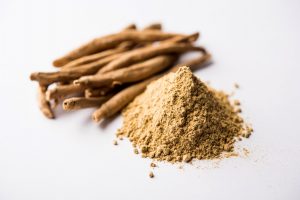Consumers are constantly looking for ways to get “energy”, but what does that actually mean and why are so many people seeking it? The answers to both of those questions are likely as varied as the people you may ask.

The main solution that people are looking for is a way to help compensate for the 24-hour, 7-day a week race that has become our normal lifestyle. Whether it is the lack of sleep, long hours, juggling competing priorities, or even searching for a sense of calm in the midst of chaos, we are looking for ways to accomplish more.
The challenge is to figure out where on the consumer spectrum products should be developed for, as well as understanding the benefit the consumer is expecting to experience.
Why are consumers seeking energy solutions?
-
- Compensate for lack of sleep- 24/7 lifestyle.
- Perform better in physical tasks (e.g. sports, labor intensive jobs, keeping up with kids/grandkids).
- Perform better mentally (e.g. test taking, cognition, focus, memory).
- Perform better both mentally and physically.
- Calmness during stressful situations to help focus.
What is energy and where does it come from?
Despite so many people wanting energy, the actual definition of it is difficult to pin down. In the purest sense, it simply equals calories. At the food level, it comes from the macronutrients (carbohydrates, fat, protein) we eat. Calories from the food that we eat provide the fuel we need to keep our bodies running (IOM, 2005). Nutrients like B vitamins are often associated with energy, but don’t actually provide any themselves. Instead, they help our body unlock the energy found in carbohydrates, proteins, and fat.
Energy-yielding nutrients
-
-
-
- Carbohydrates – whole grains provide longer-lasting energy and are great for meals and snacks, while refined grains are metabolized more quickly and are more appropriate for exercise
- Fat – a slower-burning energy, except for medium-chain triglycerides, which are a rapidly metabolized and also have a mental focus healthy halo among consumers
- Protein – key for muscle energy, especially branched-chain amino acids, and can also provide more feelings of fullness
-
-
Energy can also defined as the boost we get from stimulants like caffeine. Most of us drink a cup of coffee or tea in the morning to “help us get going”. That boost comes from caffeine. When you consume caffeine or other stimulants, you feel energized because they are, in part, increasing your heart rate, blood pressure and brain activity (McLellan et al. 2016). This wouldn’t fit the traditional definition of energy (calories), but still falls under the general population’s definition of energy.
Is energy mental, physical or both?

When cramming for exams or preparing for a big presentation, we all want to feel focused and sharp. Mental energy can be defined as alertness, ability to complete a task, or not feeling mentally tired. Focusing on work for longer periods of time is a main consumer need because it has become more difficult amidst other things competing for attention, whether it be email alerts popping up on a laptop or distractions while working from home. Some definitions of mental energy have overlap with consumer definitions of mood, which can both include things like focus, patience, calmness, longer attention span, etc.
Physical energy, on the other hand, can come in many different versions. Perhaps it is the energy to get through the day after being up all night, or the fuel you need to do your job (e.g. construction) or even just that extra burst of energy to help you finish a race faster. It is what helps us overcome the fatigue and sluggishness that comes from our hectic 24-7 lives.
Finally, energy could be a combination of mental and physical factors, depending on the consumer. For example, a soldier may seek energy to keep them awake for long periods of time while performing physically taxing exercises.
Adaptogens – emerging functional ingredients
The quest for energy is not a new phenomenon. In fact, traditional medicines from all over the world (Traditional Chinese Medicine, Ayurveda from India) have many ingredients/botanicals, called adaptogens, which have been used to help people cope during stressful times (Panossian 2017). These traditional medicines have also used ingredients/botanicals to help provide a sense of overall wellbeing.
What is an adaptogen?
Adaptogens are typically plant extracts that are thought to help the body adapt to different stressors. Stress can change the way the human body functions, and adaptogens are theorized to help restore normal physiological function. For example, it could mean helping us stay calm during a stressful situation.
 Many adaptogens have a history in ancient and traditional medicine. While the stressors in ancient times versus now are very different, the need for energy is still relevant. Ginseng has been used as an endurance performance enhancer, while Rhodiola rosea helps increase resistance to muscle fatigue (Sellami 2018). Ashwagandha was traditionally used to help enhance the body’s resilience to stress (Singh 2011). These ingredients are becoming more common in functional foods and beverages targeting energy for consumers.
Many adaptogens have a history in ancient and traditional medicine. While the stressors in ancient times versus now are very different, the need for energy is still relevant. Ginseng has been used as an endurance performance enhancer, while Rhodiola rosea helps increase resistance to muscle fatigue (Sellami 2018). Ashwagandha was traditionally used to help enhance the body’s resilience to stress (Singh 2011). These ingredients are becoming more common in functional foods and beverages targeting energy for consumers.
Clinical science is still emerging with these and other traditional ingredients (e.g. turmeric, ginger) however the initial results suggest there may actually be something to these ancient practices (Panossian 2017, Liao 2018). Regulations around the term ‘adaptogen’ vary by country due to the fact that science is still emerging, so caution and a thorough review of the science for each ingredient should be taken to be sure consumers are not misled when using these types of ingredients.
What is the right approach for foods and beverages?
First and foremost make sure you understand where on the energy spectrum the product needs to deliver. Is it mental or physical, is it lack of sleep, or it is supposed to help provide calm in order to enhance performance? If it’s a snack bar for the morning, it’s likely the consumer is looking for both a physical and mental energy benefit. For an athlete trying to fuel through a workout, physical energy (calories) might be more of a focus. For afternoon energy, maybe the goal is to provide a feeling of focus without the buzz from caffeine or the worry about interfering with sleep.
Once you have that answer, finding the right functional ingredients to help support those benefits should hopefully be a bit easier. One thing is for sure, as we continue to lead 24-hour, 7-day a week hectic schedules the need for energy is only going to increase.
Contributor:
-
References
Institute of Medicine. 2005. Dietary Reference Intakes for Energy, Carbohydrate, Fiber, Fat, Fatty Acids, Cholesterol, Protein, and Amino Acids. Washington, DC: The National Academies Press. https://doi.org/10.17226/10490.
Liao LY, He YF, Li L, Meng H, Dong YM, Yi F, Xiao PG. A preliminary review of studies on adaptogens: comparison of their bioactivity in TCM with that of ginseng-like herbs used worldwide. Chin Med. 2018;16:13:57.
McLellan TM, Caldwell JA, Lieberman HR. A review of caffeine’s effects on cognitive physical and occupational performance. Neurosci Biobehav Rev. 2016;71:294-312.
Panossian A. Understanding adaptogenic activity: specificity of the pharmacological action of adaptogens and other phytochemicals. Ann NY Acad Sci. 2017;1401:49-64.
Sellami M et al. Herbal medicine for sports: a review. J Int Soc Sport Nutr. 2018;15:14.
Singh N et al. An overview of ashwagandha: a rasayana (rejuvenator) of Ayurveda. Afr J Tradit Complement Altern Med. 2011;8:208-213.

